Your Fencing response head injury images are available. Fencing response head injury are a topic that is being searched for and liked by netizens now. You can Get the Fencing response head injury files here. Find and Download all royalty-free photos.
If you’re searching for fencing response head injury images information linked to the fencing response head injury keyword, you have visit the ideal site. Our website frequently gives you suggestions for refferencing the maximum quality video and picture content, please kindly surf and find more enlightening video articles and graphics that match your interests.
Fencing Response Head Injury. According to Heathline its an unnatural position of the arms that occurs after impact and persists up to several seconds even when the person has fallen to the ground. Chargers game and saw the Parham injury. This the latest from my sports injury blog TheInjuryInsight. Arched head and neck.
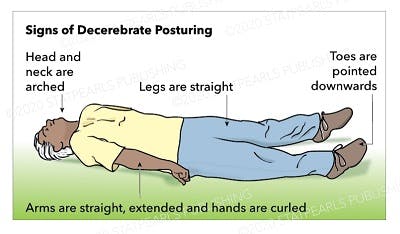 Posturing After Brain Injury Explained Decerebrate Vs Decorticate From flintrehab.com
Posturing After Brain Injury Explained Decerebrate Vs Decorticate From flintrehab.com
Our aim was to perform a biomechanical analysis of fencing response in cases sports-related traumatic brain injury. Concussions are probably one of the head injuries even casual sports fans are familiar with but you may not know about the fencing position and how it can help doctors and other medical personnel diagnose a head injury. Publication types Research Support NIH Extramural Research Support Non-US. For reference Im a DPT who runs my own clinic 3CB Performance in LA. Immediately after moderate forces have been applied to the brainstem the forearms are held flexed or extended typically into the air for a period lasting up to several seconds after the impact. Positioning for head injury patients Ideally head up 45 degrees.
The posturing may also occur without a stimulus.
Chargers game and saw the Parham injury. Chargers game and saw the Parham injury. According to Heathline its an unnatural position of the arms that occurs after impact and persists up to several seconds even when the person has fallen to the ground. Jesse Morse MD DrJesseMorse December 17 2021 The posturing described by people is also known as a fencing response to a head injury. This the latest from my sports injury blog TheInjuryInsight. In the event of a traumatic brain injury the body undergoes what is known as the fencing response.
 Source: reddit.com
Source: reddit.com
The videos were obtained from YouTubeTM. Multiple people watching the game recognized that Parhams response was typical of someone who has suffered head trauma. Concussions are probably one of the head injuries even casual sports fans are familiar with but you may not know about the fencing position and how it can help doctors and other medical personnel diagnose a head injury. For reference Im a DPT who runs my own clinic 3CB Performance in LA. Two thirds of sporting injuries that involve a blow to the head result in a fencing response.
 Source: twitter.com
Source: twitter.com
For reference Im a DPT who runs my own clinic 3CB Performance in LA. Immediately after moderate forces have been applied to the brainstem the forearms are held flexed or extended typically into the air for a period lasting up to several seconds after the impact. When a person experiences an impact thats strong enough to cause traumatic brain injury TBI such as a concussion their arms often go into an unnatural position. Our aim was to perform a biomechanical analysis of fencing response in cases sports-related traumatic brain injury. The posturing may also occur without a stimulus.
 Source: flintrehab.com
Source: flintrehab.com
When a person experiences an impact thats strong enough to cause traumatic brain injury TBI such as a concussion their arms often go into an unnatural position. Why Some Concussions Cause Weird Postures aka Fencing Response Have you seen a player get hit in the head go stiff for a few seconds known as the fencing response and wonder what happened. Publication types Research Support NIH Extramural Research Support Non-US. When a person experiences an impact thats strong enough to cause traumatic brain injury TBI such as a concussion their arms often go into an unnatural position. Specifically the mechanical forces to the head can stretch the cerebellar peduncles and thereby activate the LVN.
 Source: reddit.com
Source: reddit.com
For those of you watching the Chiefs vs. To investigate this phenomenon we used the Blender 277 software to get a. Concussions are probably one of the head injuries even casual sports fans are familiar with but you may not know about the fencing position and how it can help doctors and other medical personnel diagnose a head injury. For reference Im a DPT who runs my own clinic 3CB Performance in LA. Positioning for head injury patients Ideally head up 45 degrees.
 Source: youtube.com
Source: youtube.com
This type of posturing is characterized by. Brain injury creates a Fencing Response which causes immediate rigidity. Publication types Research Support NIH Extramural Research Support Non-US. The fencing position is common after someone has experienced an accelerationdeceleration injury of the brain as this soft brain tissues slams into the hard skull and this bruising of the higher functioning cerebrum aka gray matter temporarily shuts down its function and lets the primitive brain stem temporarily take over. The fencing response a result of concussion comes from the separation of tonic posturing increased muscle tension from convulsion.
 Source: zonecoverage.com
Source: zonecoverage.com
He was doing what is called posturing and had a fencing response to the. Immediately after moderate forces have been applied to the brainstem the forearms are held flexed or extended typically into the air for a period lasting up to several seconds after the impact. The videos were obtained from YouTubeTM. Specifically the mechanical forces to the head can stretch the cerebellar peduncles and thereby activate the LVN. From the Youtube description - The fencing response is an unnatural position of the arms following a concussion.
 Source: bleacherreport.com
Source: bleacherreport.com
Publication types Research Support NIH Extramural Research Support Non-US. Jesse Morse MD DrJesseMorse December 17 2021 The posturing described by people is also known as a fencing response to a head injury. The fencing position is common after someone has experienced an accelerationdeceleration injury of the brain as this soft brain tissues slams into the hard skull and this bruising of the higher functioning cerebrum aka gray matter temporarily shuts down its function and lets the primitive brain stem temporarily take over. For those of you watching the Chiefs vs. In the event of a traumatic brain injury the body undergoes what is known as the fencing response.
 Source: zonecoverage.com
Source: zonecoverage.com
Immediately after moderate forces have been applied to the brainstem the forearms are held flexed or extended typically into the air for a period lasting up to several seconds after the impact. Tonic posturing fencing response has been observed to precede convulsions in sports injuries at the moment of impact where extension and flexion of opposite arms occurs despite body position or gravity. This the latest from my sports injury blog TheInjuryInsight. This positionforearms extended or flexed usually in the airfollows the impact and is known as the fencing response position. Of the two types of abnormal posturing that may occur after a traumatic brain injury decerebrate posturing is much more common.
 Source: alchetron.com
Source: alchetron.com
It lasts up to several seconds after the collision Parham was in. This type of posturing is characterized by. This the latest from my sports injury blog TheInjuryInsight. The videos were obtained from YouTubeTM. What position is best for head injury.
 Source: doctordaliah.wordpress.com
Source: doctordaliah.wordpress.com
Parham 24 entered the game with 190 receiving yards. The posturing may also occur without a stimulus. Other names for decerebrate posturing include abnormal extension decerebrate rigidity extensor posturing and decerebrate response. When a person experiences an impact thats strong enough to cause traumatic brain injury TBI such as a concussion their arms often go into an unnatural position. What Parham underwent after the impact is known as abnormal posturing or the fencing response which leads to the arms and legs being held straight out the toes being clenched in a downward.
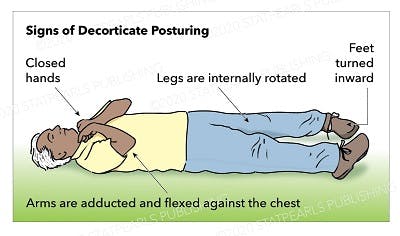 Source: flintrehab.com
Source: flintrehab.com
Positioning for head injury patients Ideally head up 45 degrees. It lasts up to several seconds after the collision Parham was in. Publication types Research Support NIH Extramural Research Support Non-US. Concussions are probably one of the head injuries even casual sports fans are familiar with but you may not know about the fencing position and how it can help doctors and other medical personnel diagnose a head injury. Our aim was to perform a biomechanical analysis of fencing response in cases sports-related traumatic brain injury.
 Source: healthline.com
Source: healthline.com
For those of you watching the Chiefs vs. Other names for decerebrate posturing include abnormal extension decerebrate rigidity extensor posturing and decerebrate response. You can recognise the fencing response through the positioning of the arms following a knock to the head. The fencing position is common after someone has experienced an accelerationdeceleration injury of the brain as this soft brain tissues slams into the hard skull and this bruising of the higher functioning cerebrum aka gray matter temporarily shuts down its function and lets the primitive brain stem temporarily take over. What position is best for head injury.
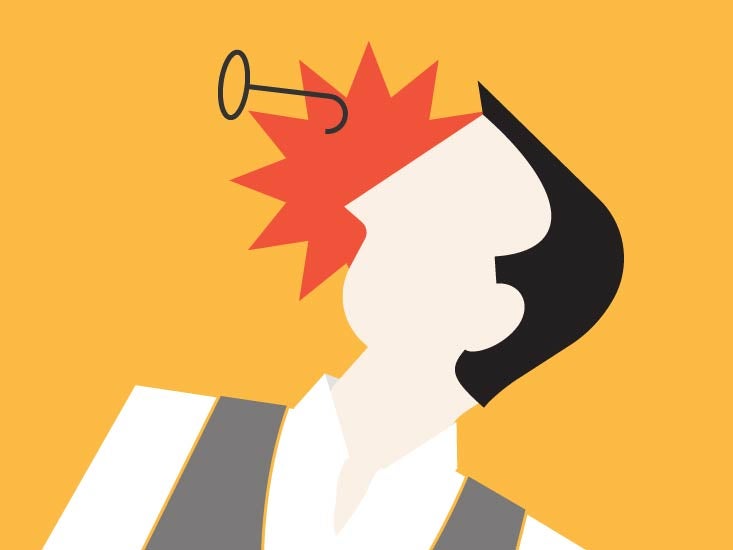 Source: healthline.com
Source: healthline.com
The fencing response is a thrusting the arms outward from the body provides positive proof of LOC A study by Hosseini and Lifshitz in 2009 showed that 66 of concussed players exhibit the. The fencing response is a thrusting the arms outward from the body provides positive proof of LOC A study by Hosseini and Lifshitz in 2009 showed that 66 of concussed players exhibit the. Why Some Concussions Cause Weird Postures aka Fencing Response Have you seen a player get hit in the head go stiff for a few seconds known as the fencing response and wonder what happened. Our aim was to perform a biomechanical analysis of fencing response in cases sports-related traumatic brain injury. Concussions are probably one of the head injuries even casual sports fans are familiar with but you may not know about the fencing position and how it can help doctors and other medical personnel diagnose a head injury.
 Source: pinterest.com
Source: pinterest.com
Arched head and neck. Of the two types of abnormal posturing that may occur after a traumatic brain injury decerebrate posturing is much more common. This type of posturing is characterized by. Abnormal posturing is an involuntary flexion or extension of the arms and legs indicating severe brain injuryIt occurs when one set of muscles becomes incapacitated while the opposing set is not and an external stimulus such as pain causes the working set of muscles to contract. It lasts up to several seconds after the collision Parham was in.
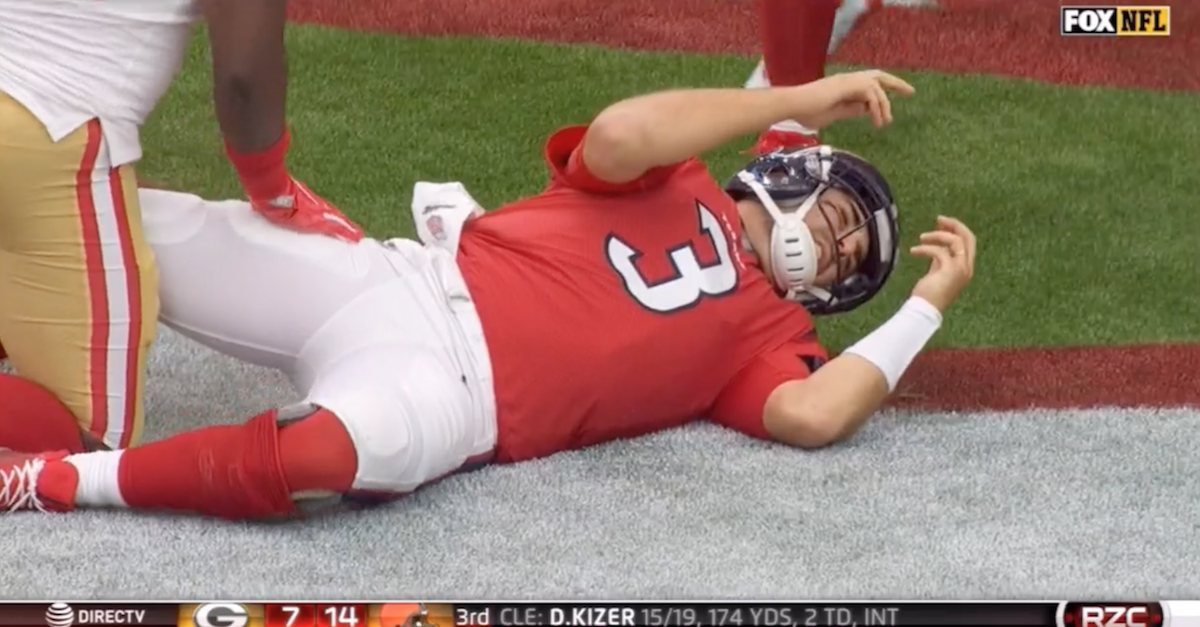 Source: fanbuzz.com
Source: fanbuzz.com
Why Some Concussions Cause Weird Postures aka Fencing Response Have you seen a player get hit in the head go stiff for a few seconds known as the fencing response and wonder what happened. Brain injury creates a Fencing Response which causes immediate rigidity. Abnormal posturing is an involuntary flexion or extension of the arms and legs indicating severe brain injuryIt occurs when one set of muscles becomes incapacitated while the opposing set is not and an external stimulus such as pain causes the working set of muscles to contract. Failed verification Since posturing is an. Why Some Concussions Cause Weird Postures aka Fencing Response Have you seen a player get hit in the head go stiff for a few seconds known as the fencing response and wonder what happened.
 Source: gridironstrong.co.uk
Source: gridironstrong.co.uk
Positioning for head injury patients Ideally head up 45 degrees. Abnormal posturing is an involuntary flexion or extension of the arms and legs indicating severe brain injuryIt occurs when one set of muscles becomes incapacitated while the opposing set is not and an external stimulus such as pain causes the working set of muscles to contract. Of the two types of abnormal posturing that may occur after a traumatic brain injury decerebrate posturing is much more common. The fencing response a result of concussion comes from the separation of tonic posturing increased muscle tension from convulsion. What Parham underwent after the impact is known as abnormal posturing or the fencing response which leads to the arms and legs being held straight out the toes being clenched in a downward.

Two thirds of sporting injuries that involve a blow to the head result in a fencing response. Publication types Research Support NIH Extramural Research Support Non-US. To investigate this phenomenon we used the Blender 277 software to get a. Immediately after moderate forces have been applied to the brainstem the forearms are held flexed or extended typically into the air for a period lasting up to several seconds after the impact. He was doing what is called posturing and had a fencing response to the.
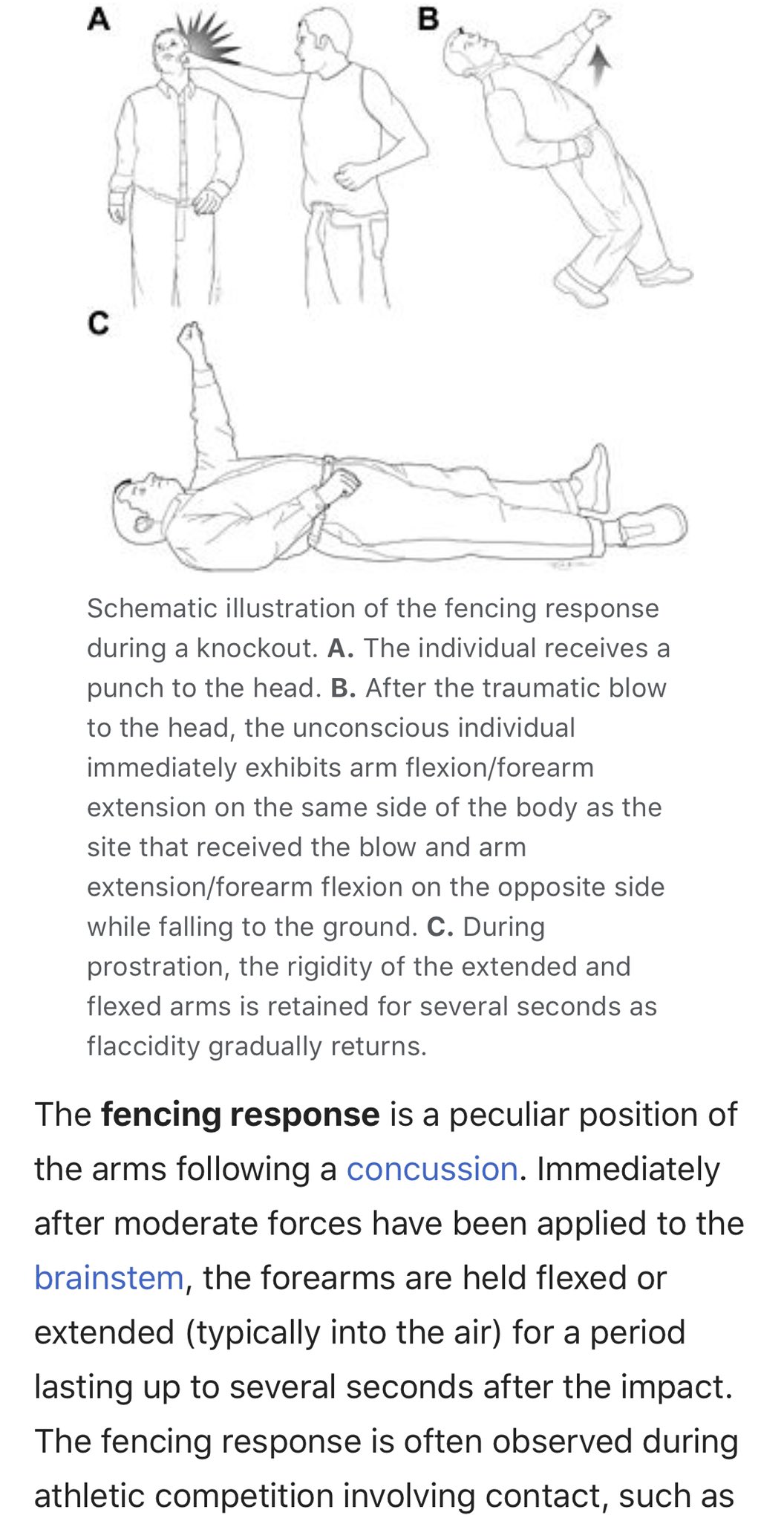
What Parham underwent after the impact is known as abnormal posturing or the fencing response which leads to the arms and legs being held straight out the toes being clenched in a downward. What Parham underwent after the impact is known as abnormal posturing or the fencing response which leads to the arms and legs being held straight out the toes being clenched in a downward. Jesse Morse MD DrJesseMorse December 17 2021 The posturing described by people is also known as a fencing response to a head injury. Other names for decerebrate posturing include abnormal extension decerebrate rigidity extensor posturing and decerebrate response. When a person experiences an impact thats strong enough to cause traumatic brain injury TBI such as a concussion their arms often go into an unnatural position.
This site is an open community for users to share their favorite wallpapers on the internet, all images or pictures in this website are for personal wallpaper use only, it is stricly prohibited to use this wallpaper for commercial purposes, if you are the author and find this image is shared without your permission, please kindly raise a DMCA report to Us.
If you find this site convienient, please support us by sharing this posts to your preference social media accounts like Facebook, Instagram and so on or you can also save this blog page with the title fencing response head injury by using Ctrl + D for devices a laptop with a Windows operating system or Command + D for laptops with an Apple operating system. If you use a smartphone, you can also use the drawer menu of the browser you are using. Whether it’s a Windows, Mac, iOS or Android operating system, you will still be able to bookmark this website.






